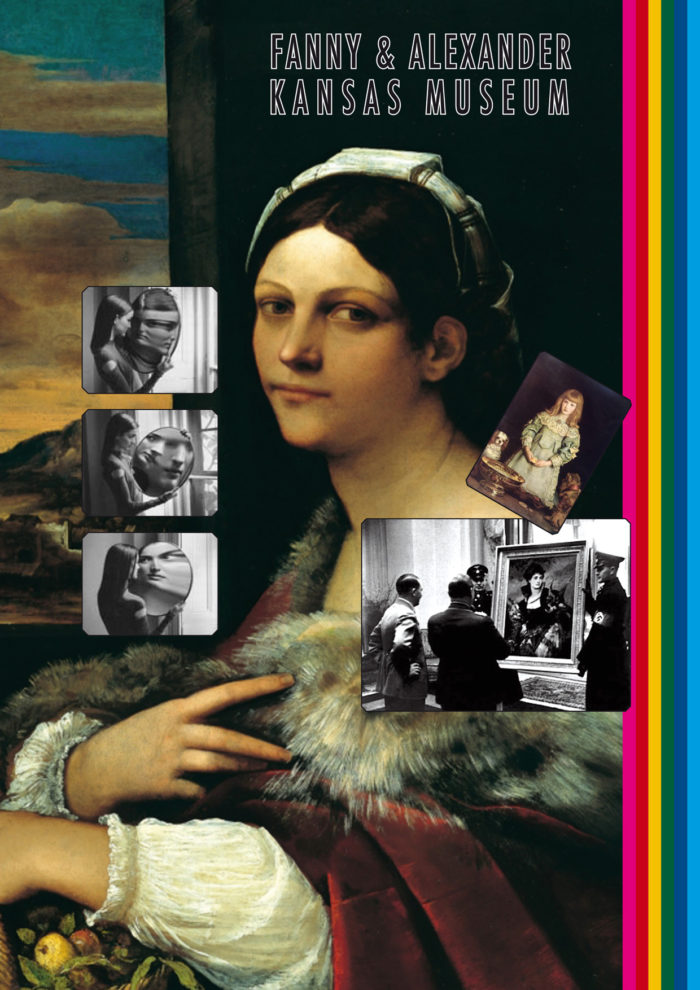Kansas Museum
production Fanny & Alexander
- concept Chiara Lagani and Luigi de Angelis
- music Mirto Baliani
- dramaturgy Chiara Lagani
- costumes Chiara Lagani and Sofia Vannini with Marta Benini (tailoring) and Francesca Messori (dyeing)
- direction Luigi de Angelis with Marco Cavalcoli, Chiara Lagani, Davide Sacco
- idiom of the compass Stefano Bartezzaghi,
- promotion Valentina Ciampi, Marco Molduzzi,
- press office Marco Molduzzi,
- logistics Sergio Carioli
- administration Marco Cavalcoli, Debora Pazienza
«In the future you’ll have a dream as if you were sleeping, when you open up your eyes you will see a familiar face»
Year : 2009
KANSAS WAS AN ART GALLERY OF SIGHTS TO LONG FOR, THE ENDLESS PRAIRE OF A TALE, OF THE COLOUR OF FADED DUST. A PREMISE, A RECESS, A RETURN, A DEPARTURE, A HINDRANCE, A CRACK, A FIT OF GIDDINESS, A SERIES OF ATTEMPTS OR METAMORPHOSES. A WOUNDED PLACE, A WORLD WITH A WILD AND INCOMPREHENSIBLE HEART.
AND NOW? WHICH POSSIBLE JOURNEY BEGINS FOR US AND DOROTHY, AFTER GOING THROUGH THE STORM, OVER THE RAINBOW OF HER IRREPARABLE KANSAS?
Kansas Museum is a performance conceived for the exhibition rooms of contemporary art museums, and it’s part of the “OZ PROJECT” inspired by the story of “The Wonderful Wizard of Oz” by F.L. Baum together with the shows EAST, Emerald City, KANSAS, HIM, Dorothy. Disconcert for Oz, South, North, There’s no place like home. Kansas Museum is a work inquiring on the peculiar act of watching that’s specifically practiced inside museum halls. It represents a gallery of possible looks at objects with the statute of artworks, a path carried out by means of six action portraits where the position of the audience/spectators is continuously moved in the context of a “scenic contract” which is systematically betrayed and joined by the “front view agreement” of the museum.
Excerpt from “Watching someone who is watching. The audience before and after Dorothy” by Lorenzo Donati, in There’s no place like home, Monica Bolzoni and Fanny & Alexander, Il Vicolo Editore, Cesena (FC) 2009.
“Kansas evokes the common situation of museum fruition, which, as everybody knows, involves a private and individual act of vision in a space that, on the contrary, is public. On stage, five women enter and watch five pictures portraying as many female figures who are watching in their turn. But it’s not the generic act of watching. In every portrait the presence of someone watching is implicit, as it happens as a matter of statute with the portrait’s form, that is the object exposed to view par excellence. What these portraits seem to have in addition, or better said in addition to the codified pact of fruition which they naturally establish, is the explicit expectation of a watching presence. Those portraits are really watching you, they are forcing you to ask yourself why you’re watching them, and how you’re watching them. In substance, they make you wonder if the people who are watching, by persistently staying in front of those women, and in that specific museum, are changing from the subject to the object of the fruition act. We audience members, in this context, are nothing but observers, just like the five different women on stage, only more distant, and if a light source was turned on behind us, a shadow bigger than the women themselves would fall upon the portraits. Therefore, the show forces our presence on the portraits, our looks, and vice versa it also includes us in the ones the portraits have expected.”

